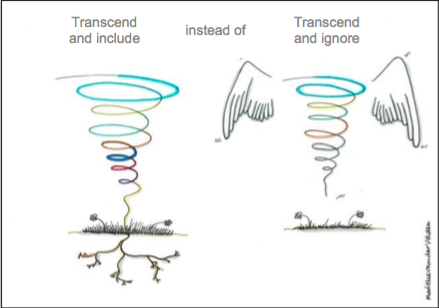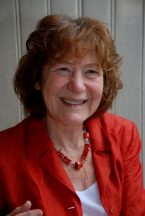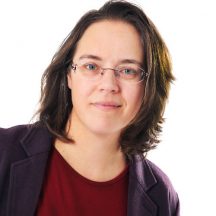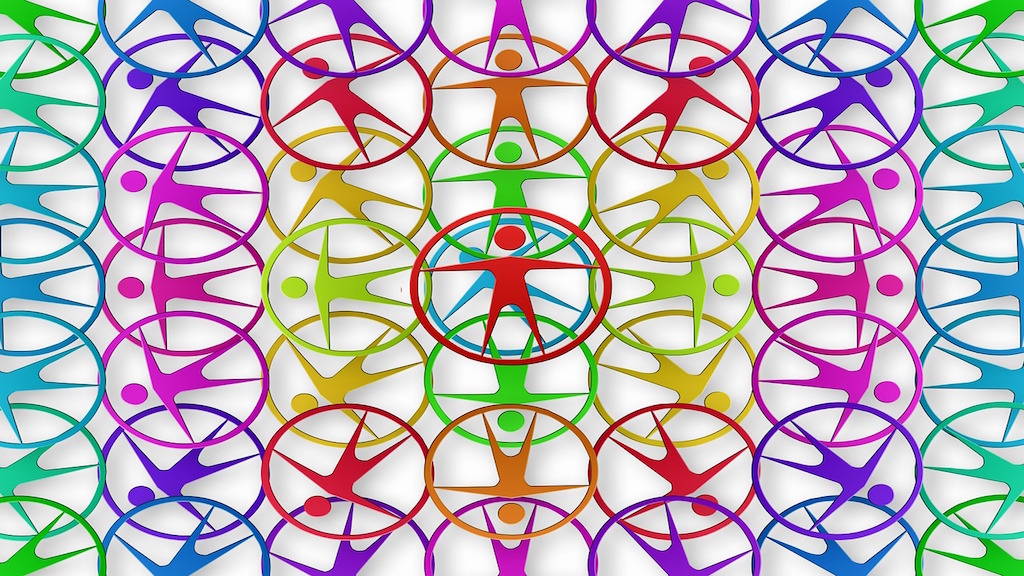By Ard Hordijk, Anouk Brack, and Leida Schuringa for Enlivening Edge Magazine
With his book, Reinventing Organizations, Frederic Laloux stirred up desire for Teal organising. The way the Dutch entrepreneur Jos de Blok built Buurtzorg Nederland is a good example of Teal, and more experiments are running in all kinds of sectors in the Netherlands. In this article, we will explore what building a Teal organization requires and how you can move towards it. We will use the framework of Spiral Dynamics in which Teal is called the Yellow value-system/worldview, which is the first stage of what is referred to as Second Tier.
Our conclusion is that in their enthusiasm to move to the YellowTeal stage, quite a few people and organizations are transcending and ignoring the underlying value systems instead of transcending and including them. From our work with Spiral Dynamics Integral (SDi), we found that a well-functioning Yellow organization needs a strong and healthy foundation of all the preceding value systems.
To put it even more emphatically, the essence of a Yellow/Teal organization is creating the conditions for all the underlying value systems/stages of worldviews to express themselves in a healthy way.
Laloux wrote a highly valuable book based on his research of several Yellow organizations. He describes their ways of thinking and their practices and systems around wholeness, self-organization, and evolutionary purpose. The strength of this book is that it shows that Yellow organization is possible, and is already practiced in various places.
It refutes some of the assumptions people have about this kind of organization, like the absence of any structure resulting in total freedom and anarchy. The companies researched cover a wide range of sectors. That makes the outcome even more credible: a company that produces valves for the car industry, an energy company, a healthcare organization, and a school in Berlin, among others. We highly recommend reading the book and enjoying all the examples Laloux found.
 However, we find some of the framing Laloux uses is not helpful to answer the question of what a YellowTeal organization needs, and how people can apply it to their own organization. In more and less subtle ways, the book has a tendency to transcend and ignore. This phrase, coined by Ken Wilber, means that new and more complex stages of consciousness transcend the older less complex value worldviews (stages) and at the same time ignore their value, by framing them solely as something to get away from. How does this transcend and ignore tendency expresses itself in Laloux’s book?
However, we find some of the framing Laloux uses is not helpful to answer the question of what a YellowTeal organization needs, and how people can apply it to their own organization. In more and less subtle ways, the book has a tendency to transcend and ignore. This phrase, coined by Ken Wilber, means that new and more complex stages of consciousness transcend the older less complex value worldviews (stages) and at the same time ignore their value, by framing them solely as something to get away from. How does this transcend and ignore tendency expresses itself in Laloux’s book?
First the ignore aspect. The description of organizations based on older stages of worldviews/value systems is consistently worded in a negative way. In Spiral language: primarily the unhealthy expressions of the value systems are described.
Some examples:
- “They don’t have Orange’s obsession with growth…..
- The fear-based nature of the ego in Red, Amber, and Orange predisposes leaders and employees to see the world as a dangerous place with competitors everywhere trying to steal their lunch.….
- In the machine paradigm of Orange, organizations are viewed as inanimate, static systems―a collection of boxes that stack up in a pyramid structure.”
Of course, we all know that organizations can be this way, but it is a stereotype. For example, many Orange organizations have a healthy focus on continuous improvement.
Second, the aspect of Transcend. A subtle assumption underlies the book that we should all move to Teal as soon as possible. Laloux recognises that not all people should be Teal, but at least the leadership must be in order to enable other employees to behave in a Teal way. The supposition of the quote just below is that people can and should adopt behaviours from later stages of consciousness. The question is whether this is possible — we don’t think so — but of course it is an attractive transcendent vision.
“Of course, in a self-managing organization, everyone can and should step up, like the CEO, to uphold Evolutionary-Teal principles and practices. But not everybody needs to view the world through Teal lenses. That is the magic of organizations: their processes can lift up employees to adopt behaviours from later stages of consciousness that they might not yet have integrated at an individual stage.
If many people in an organization have grown to a Teal perspective, there are that many more people who can hold the space. But ultimately, if everyone else fails to do so, that task falls back on the CEO. Perhaps the day will come where most or all colleagues in an organization have embraced the Evolutionary-Teal stage of development; then the CEO’s role of holding the space will not be needed any longer. Until that happens, this role remains essential.”
From our own experience in advising and training people in organizations, and from the examples given by Laloux, there is indeed a magic in these Teal organizations. However, we explain this magic by the fact that Teal organizations create the conditions under which each of the value systems can express themselves in a healthy and constructive way. In the examples cited by Laloux, one sees in these organizations a lot of
- Purple pride and sense of belonging (like in the FAVI case),
- Red autonomy (“I stand for what I want”) and courage,
- Blue efficient systems and procedures,
- overflowing Orange pragmatic, result-driven project management, and
- Green eye and sensitivity to human relations, showing up especially in all the conflict resolution and dialogue processes that Laloux describes in the chapter on Wholeness.
It is our stance, therefore, that a more helpful frame is one based on Transcend and Include: the goal is not to get everybody to Teal, or even to have them adopt Teal behaviour, but to support the healthy expression of all underlying value systems/worldviews.
This perspective calls for leadership and people in the organization to take responsibility. In Laloux’s research, the issue of taking responsibility is mentioned many times by leaders of Teal organizations: “For people experiencing self-management for the first time, the ride can be bittersweet at first. With freedom comes responsibility: you can no longer throw problems, harsh decisions, or difficult calls up the hierarchy and let your bosses take care of it. You can’t take refuge in blame, apathy, or resentfulness… Everybody needs to grow up and take full responsibility for their thoughts, actions, and relationships―a steep learning curve for some people.”[i]
Taking responsibility for your thoughts, actions, and relationships can be done by everyone no matter what their most dominant value system is. But it means something different in each of the various worldviews.
- In Purple, responsibility means careful implementation of your natural role in the group;
- in Red, it means to show proudly who you are and what you want;
- in Blue it is to do what is needed and to stick to agreements;
- in Orange responsibility is about entrepreneurship, taking initiatives and being successful; and
- in Green it is to ensure that all voices are heard.
Taking responsibility is also highly related to a state of being. It needs a certain openness and centeredness, especially for those in leadership. All leaders and change-agents will have more difficulty working with some value systems than with others. Everybody has their personal hang-ups, preferences and shadow-sides. These make us easily reactive and uncentered. When we get triggered, we temporarily lose access to our full capacity. Our more primitive survival brain takes over and we forego important skills like taking in information, creativity, innovation, risk taking, reflection, and compassion.
So, the more complex the situation or organization, the more we need to be able to center ourselves under pressure, to be able to transcend and include. Ken Wilber points out the value of the state of consciousness of being centered this way: … what you’re really doing when you center is that you are in a sense placing yourself in the very center of the cyclone. You’re placing yourself in pure emptiness to the extent you have access to that….” (Ken Wilber, personal communication, 2011.)
During a recent workshop organised by Synnervate (www.synnervate.nl) we explored what Second Tier organizations need using the principles of transcend and include, taking responsibility, and open/centered states. We gave an introduction about Teal and the Transcend-and-include frame as described above. We followed up with state development, using Leadership Embodiment and its core practice of centering. Amongst other practices we practiced the following one-breath version of centering: “Breathe in and lengthen your posture to be more upright and dignified. Breathe out become aware of the space around you, relax muscle tension, and think of someone who makes you smile.”
Participants brought in and explored their dilemmas around Yellow in their organizations which varied from a food cooperative, a school, a company offering a tool for radical new ways of working, to a start-up in healthcare.
They found it highly valuable, insightful, and useful to analyse the influence of all value systems in both healthy and unhealthy manifestations.
They could see the value and contribution of each. This supported them in getting clarity on the next steps they should take in moving towards a more Yellow/Teal organization.
It was interesting that people often found that especially Blue and Orange need extra attention in order to create a firm foundation for Yellow. In some cases, these were the same value systems the people had a personal challenge with. That’s where the value of the practice of centering was recognised: from a centered state one is more able to bring what’s needed to the situation, whether one as a person particularly likes it or not.

Ard Hordijk works on multi-stakeholder collaboration for systemic change. He supports and advises organisations that play a leading role in multi-stakeholder contexts. He uses integral systems analysis and brings together different organisations to work on sustainable development. Ard is econometrist and partner at Synnervate. In the past, he has worked for Nyenrode Business universiteit, Twynstra Gudde Managers and Consultants and Environmental Resources Management.

Leida Schuringa is a coach, author and SDi-trainer. She is very interested in applying SDi on societal issues. She worked in the non-profit sector and international development (at this moment in projects in Malawi and Czech Republic). She wrote books about project management, handling diversity, and community empowerment. Her passion is to contribute to cooperation between people from many different backgrounds.

Anouk Brack is an international expert in embodying Teal leadership – www.anouka.nl.
Synnervate delivers training, coaching and advice for start-ups and organizations, which want to grow into Second Tier (Yellow or Teal stage). Contact Ard Hordijk ([email protected]) or Leida Schuringa ([email protected]).





Thanks. Great article, which aligns well with my own articles and comments in EE, including the one in this issue. https://enliveningedge.org/columns/demerdez-vous/
Transcend sometimes has misleading linguistic implications of rising above and going beyond. I think of the stages as like a stack – if the lower ones are not in healthy form and in balance with one another, the platform is unstable. Teal cannot develop under such conditions and the work to be done is lower down, and often as much systemic /exterior as cultural / interior.
Indeed, great article!
but…
why, ohh why, has the Beige disappeared??? especially when you are talking about embodiment??? for me that is the value of Beige! I had hoped that this article would make that link… knowing a bit about Anouk’s work. Or how do you see the Beige in all this???
Ria, as you know I agree very strongly. Beige deserves more than a mention though, there are such riches to be mined there. Perhaps you could write an article? Or we could?
Jon, if you would start with a draft, I could add to it. Might be one possibility. Or we first have a chat on Skype or so, and then we go from there? What would work for you best?
Oh wow, would I EVER love to see you two write about how healthy Teal requires, uses, embodies, builds on, healthy Beige!!! I too am big on the importance of Beige for development. It’s easier to see for individuals.
I know people will say “What sorts of organizations exist in Beige consciousness?” There ARE answers to that, but to my knowledge no one has written about it. The easier question is what I said: “How does a healthy Teal organization require a foundation and expression of healthy Beige?” If we think of Beige as including care for health and safety, some of the answer begins to glimmer.
Could you include anything from the CHE-Netherlands workshop on the Beauty of Beige? Anne-Marie Voorhoeve is how I know about that, and I wish I knew more about it.
Hello Alia, there have been a couple of conference calls on the Beauty of Beige, of which Jon was part of – and I only participated in the last one. So yes, we know about that. (I was not in the workshop though)
Let’s wait for Jon’s reply here.
With love,
Ria
A really useful article, thank you, it is helping me to start to find my way through something I have been grappling with for a while and how to discuss it with colleagues rather than to be triggered into defending reactions.
The “Beauty of Beige” sounds intriguing, Ria and Jon…
Thanks for these responses. After I wrote the suggestion, it wouldn’t let go of me so I am working on a draft now! Will share with you Ria, Alia, Jules. Hopefully soon. I will start with individuals – if only to keep the initial length manageable. I look forward to wherever we might collectively take it.
Looking forward to read, work, co-create!
My friend Diana Claire Douglas http://www.inspiritworks.com/Pages/default.aspx asked me what responsibility would look like at Beige and Yellow/Teal. Here’s my reply, others might respond here too. I LOVED the examples in this article of how various things show up at various stages!!
Her version of Yellow was:
Yellow possibly: taking responsibility for creating the conditions for all the underlying value systems/stages of worldviews to express themselves in a healthy way.
My response:
I’d say in Beige consciousness (which we all have as the foundation of all our more mature stages!) responsibility centers around doing what is needed for one’s own health, well-being, and safety. And to a certain extent, what is needed for the health, well-being, and safety of one’s primary group of relationships. (Usually kinfolk.)
And for Yellow, that has to be phrased in a way that would be true for anyone who does NOT consciously know about stages; your formulation is accurate and essential, methinks, and I wonder if it implies knowledge of stages.
Another way to say it might be: Responsibility at Yellow/Teal means to discern and act according to the partial truths in every situation/view/behavior, AND to prioritize those (for self and the “system”) for optimizing achievement of purpose.
That I think says the same thing, but in more ordinary language. ??
Alia – and others, I think it is quite simple:
For Beige you write: “doing what is needed for one’s own health, well-being, and safety. And to a certain extent, what is needed for the health, well-being, and safety of one’s primary group of relationships. (Usually kinfolk.)”
if the movement to 2nd Tier is the movement from ego-centric to world-centric isn’t then the definition of Teal/Yellow: doing what is needed for the health, well-being, and safety on the global scale. And to a certain extent, what is needed for the health, well-being, and safety of all of humanity (act locally, think globally.
I think your descriptions are in line with that.
Yep, Ria, my descriptions are in line with that. Perhaps I can say how: That is one way the Beige would show up in Teal. As we know, each stage flavors/colors the way the earlier stages show up in that person, organization or society, but show up they do, and must, necessarily, for health.
I interpreted Diana Claire’s question as: how would “taking responsibility” show up in Beige for a person ONLY in Beige–IF such a concept would show up there, which of course it doesn’t. That question is a mite hypothetical, but IMO valuable.
But a person wouldn’t have their own healthy Beige consciousness at any later stage they might be in, if they weren’t exercising that responsibility, IMHO, AND also exercising the fractals of how it shows up at whatever their predominant stage was, exactly as you described it would show up in Teal, Ria. Very elegant. Presumably Teal is also exercising the versions of responsibility for Purple, Red, Blue, Orange, and Green, as articulated in the article above. Just the Teal-flavored/colored versions of those.
I think we’re probably aligned on that, too!